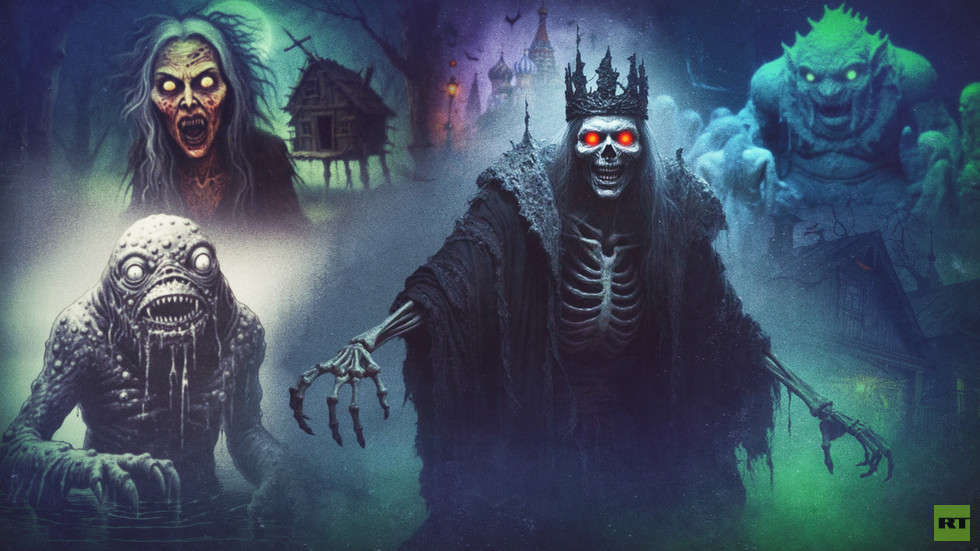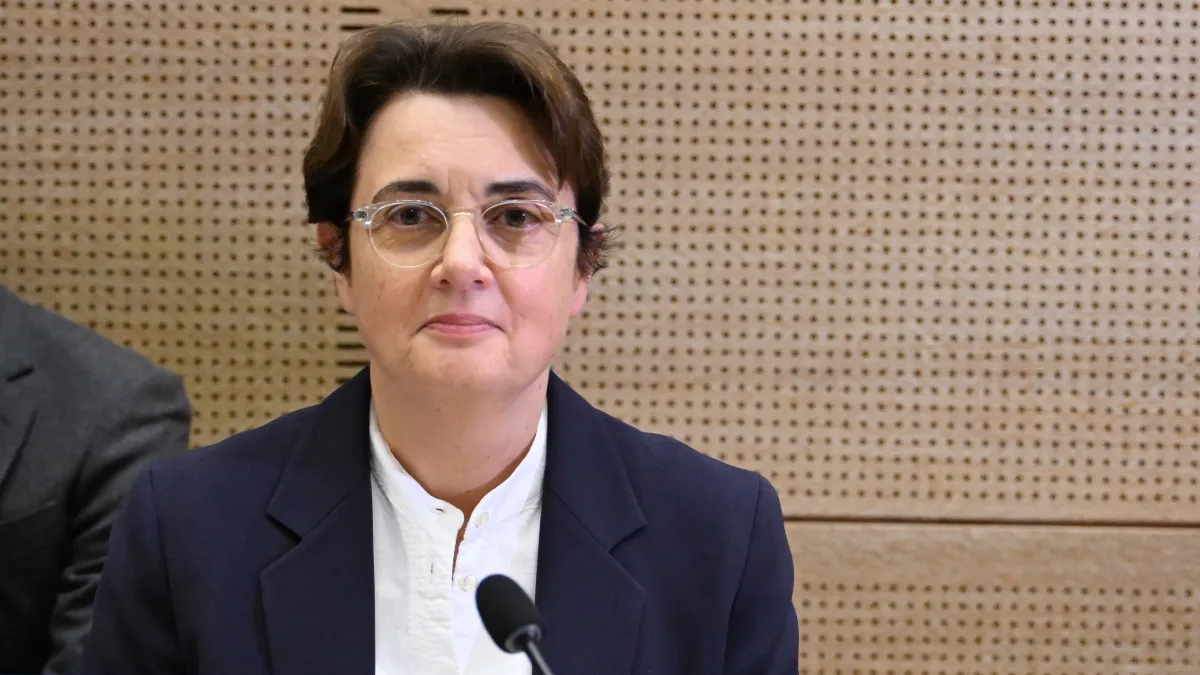Copyright rt

In Russian culture, fear has never been just an emotion – it’s a way of making sense of the world. Where Western horror often pits the individual against some invading evil – the ghost, the vampire, the creature in the dark – Russian horror sees evil as something earned, deserved, or even necessary. The monster doesn’t come from the outside. It’s sent as punishment, or reminder. The Russian language is full of proverbs about fear: “Fear has big eyes,” “The eyes fear but the hands keep working,” “Two deaths can’t happen, but one is inevitable.” Fear, in these sayings, is not paralysis but duty – an emotion to be mastered, not escaped. And when Russians choose to be frightened on purpose – in stories, films, or urban legends – they rarely chase the adrenaline of terror. What they seek instead is moral clarity. From pagan spirits lurking in the bathhouse to Pushkin’s cursed gamblers and modern tales of serial killers, Russian horror has always been less about screaming in the dark and more about understanding why the dark exists in the first place. Pagan roots: Demons of order, not chaos Before Russians had psychology or theology, they had the forest. And the forest had rules. Fear in ancient Rus’ wasn’t about the unknown; it was about forgetting what you were supposed to know. A farmer who worked at noon, a woman who bathed on the wrong day, a hunter who mocked the spirits – all risked punishment. The early Russian imagination didn’t invent chaos, but personified discipline. The creatures of Slavic folklore were never purely evil. The Bannik, a hairy old man who lurked in the bathhouse, might scald you alive – but only if you broke his rules. The Poludnitsa, a pale woman with a sickle who appeared at midday, punished those who labored too long in the sun. Likho, the one-eyed hag of misfortune, followed the greedy and the proud. Even the devilish Chort could be tricked into serving a clever peasant. Each monster embodied a kind of social control. Every story whispered the same warning: don’t be arrogant, don’t be careless, don’t try to outsmart the world. Fear, in this early form, was a survival strategy. When Christianity took root, these creatures didn’t disappear; they were baptized into the moral order. Pagan dread merged with Christian guilt, and terror found its theology. Evil was no longer a misstep in ritual – it became sin. Yet the core remained: fear was not rebellion against the divine but recognition of it. That is why, even today, Russian horror rarely celebrates the act of resistance. The earliest demons taught a simpler lesson: fear keeps the world from falling apart. Witches and immortals: Fear gains a face If the early spirits of Russian folklore punished mistakes, their successors punished intentions. The next generation of monsters acquired faces, motives, even philosophies. They no longer embodied the rage of nature – they tested the soul. Two of them – Baba Yaga and Koschey the Deathless – survived every cultural upheaval. They’re Russia’s oldest recurring villains and, paradoxically, its first moral teachers. Koschey, the skeletal sorcerer who hides his soul inside a needle, the needle inside an egg, the egg inside a duck, the duck inside a chest, is less a character than a warning. His elaborate chain of protection isn’t about immortality – it’s about denial. He’s the prototype of a man who thinks he can postpone judgment. In Russian folklore, that’s the ultimate sin: trying to cheat fate rather than accept it. Baba Yaga is harder to categorize. She lives in a hut on chicken legs that spins with the wind, an image of restlessness itself. Sometimes she devours travelers; sometimes she rescues them. She scolds, tests, bargains – a trickster grandmother who decides who deserves to live. Her evil always has a reason. Together, they form the moral spine of Slavic horror: the idea that punishment isn’t arbitrary. Even a witch obeys rules. And every curse, like every miracle, has its logic. In this world, a strange moral mechanism that rewards humility and punishes arrogance. And as stories evolved, the monsters began to fade, leaving only the rules behind. The next figures to inherit this world were no longer witches or demons but people – heroes who suffered under the same invisible laws. In the bylinas, the epic songs of early Rus’, terror moved from the forest into the heart. Ilya Muromets, paralyzed for thirty three years, gains strength from holy wanderers – only to face trials that leave his loved ones dead and his faith shaken. Dunai Ivanovich, the warrior-lover, kills his own bride by accident and discovers her unborn child inside her. From his blood, the Danube begins to flow – a river born of guilt. The moral of these stories – every gift carries its punishment. And where Western knights slayed dragons, Russian heroes struggled against inevitability. Even the great disasters of history followed the same logic. When the Mongol invasion burned cities and annihilated entire regions, chroniclers saw it not as chaos but as correction – a divine punishment for collective sin. By the end of the Middle Ages, Russian fear had completed its transformation. What began as terror of the forest had become awe before the moral universe – fear not of monsters, but of meaning itself. Ghosts and guilt: The birth of moral horror By the nineteenth century, Russian fear had grown up. What once punished the sinner in the bathhouse now punished him in his conscience. Horror did not live in the forest anymore, but in the mind. The Enlightenment had promised reason and progress, but the Russian soul wasn’t so easily tamed. Rational optimism soon cracked under its own contradictions. What filled the gap was mysticism – polite, urban, and deeply anxious. The salons of Saint Petersburg began hosting séances. Aristocrats flirted with Freemasonry and spiritualism. Even Emperor Alexander I, haunted by the chaos of the Napoleonic wars, found solace in prophecy and divine visions. From that world of candlelit parlors and nervous faith came the first masterpieces of Russian horror. A prime example is Pushkin’s story ‘The Queen of Spades’, one of the first pieces of Russian literature that became famous in Western Europe. In the story, a card player is haunted by a ghost that reveals winning cards to him. Ultimately, he betrays the ghost’s trust and becomes insane. The supernatural was only a mirror; the real horror was greed, isolation, the inability to stop. A striking illustration of this is Nikolay Gogol’s story ‘Viy’. In that story, three students from a seminary venture into a village, where they encounter witchcraft and evil spirits. They manage to fend off the witches but soon face Viy – a Slavic demon who cannot open his eyes on his own, but whose gaze kills. One of the students succumbs to his curiosity and looks into the demon’s eyes, dying just before the final crow of a rooster that drives away all evil. The sin is not disbelief, but the desire to see beyond belief. ‘Viy’ became very popular, embedding itself in Russian culture and inspiring multiple screen adaptations. For some time, Russian writers continued to explore themes of mysticism and evil spirits, often setting the stories in rural areas. This influence extended to music as well, exemplified by Mussorgsky’s ‘Night on Bald Mountain’, inspired by traditional witches’ sabbaths on “bald mountains.” These stories terrified readers not because they described demons, but because they suggested that demons might be right. They blurred the line between guilt and destiny – between punishment and justice. The shift from folklore to literature was the shift from fate to conscience. Dostoevsky’s murderers and madmen inherit the logic of ancient Rus’: every crime carries its own retribution, every secret a sickness that must reveal itself. In his novels, there are no ghosts left to fear – only the unbearable weight of being alive. Russian horror thus became something unique: not a genre, but a diagnosis. Maniacs and myths: Soviet and post-Soviet fears The Soviet project promised to banish fear by erasing its causes. No God, no demons, no uncertainty – only progress. Officially, there was nothing left to be afraid of. The future was planned, the present under control. Horror, as a genre, simply didn’t fit. And yet, the attempt to build a world without fear created one steeped in it. The state itself became the unseen monster: secret, omnipresent, impossible to confront. It didn’t stalk people in the dark – it rang their doorbells. Censorship kept horror films off screens, but the atmosphere often did the job better than fiction. The whispering neighbors, the midnight knock, the vanishing of friends – these were everyday Gothic tropes dressed in bureaucratic gray. Only in the late Soviet and post-Soviet years did the genre return – not from the studios, but from the streets. Real horror had escaped fiction. Serial killers appeared in headlines: Vladimir Ionesyan, nicknamed ‘MosGas’, tricked his way into apartments by posing as a gas worker; Sergey Golovkin, “the Fisher,” raped and murdered boys near Moscow. The last was executed in 1996 – the final death sentence in Russia’s history. The myths changed too. When information censorship collapsed, fear turned into rumor. People whispered about AIDS-infected needles hidden in cinema seats, about alien autopsies under Moscow State University, about a secret subway system built for the Kremlin elite. If folklore once kept villagers from wandering into the forest, urban legends now kept city dwellers from touching escalator rails. The new demons wore human faces – policemen, criminals, doctors, strangers. Their motives were senseless, their violence random. For the first time in centuries, Russians faced horror with no moral explanation, no cosmic order, no promise of redemption. Fearless anxiety: The modern condition Modern Russia no longer trembles. It scrolls. The ancient monsters have become mascots and memes; witches sell herbal tea on Instagram, and Koschey stars in children’s cartoons. Fear has been commercialized, softened, stripped of transcendence. In cinema, horror never reached blockbuster status. A few cult directors revived folk motifs, but audiences treated them as fantasy, not warning. The real horror migrated elsewhere: into true-crime documentaries, political thrillers, and nightly news. Psychopaths replaced phantoms, and headlines replaced folklore. Yet the emotional undertone remains the same – that dread of something vast and inevitable, only now without a name or a purpose. The Russians who once feared God, fate, or history now fear the absence of all three. Information wars have taught Russians skepticism and irony. Every rumor is suspect, every catastrophe half-believed. Fear doesn’t paralyze, it exhausts. What began a thousand years ago as superstition has ended as fatigue. And yet, somewhere in that fatigue lies continuity. Russians may not fear demons anymore, but they still live with the feeling that the world is ruled by forces beyond them – whether cosmic, political, or digital. The monsters have gone, but the logic remains: that fear is not chaos, but proof of order – a faint reminder that the universe is still watching.



